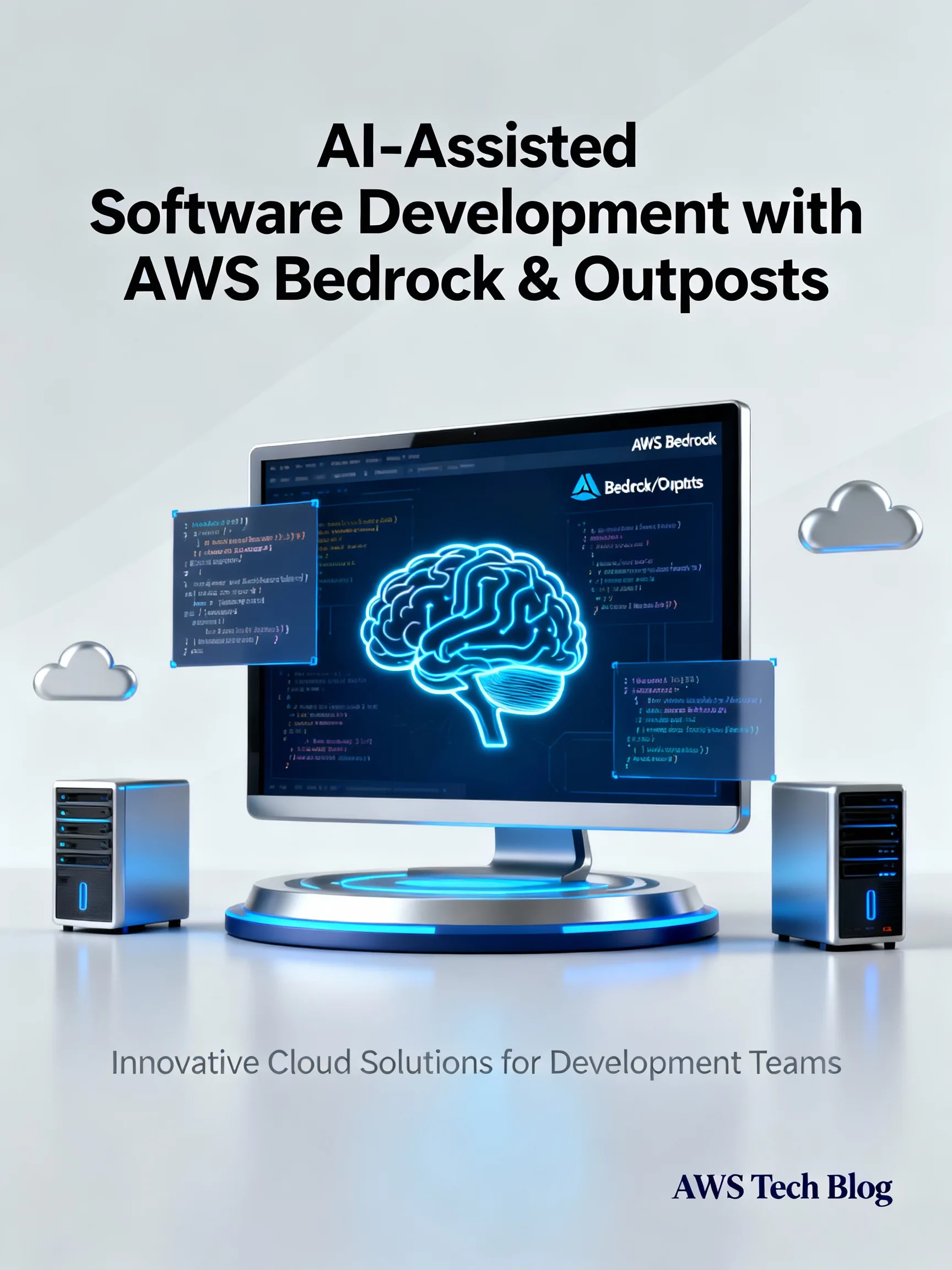
Introduction
AI-assisted software development is transforming how teams design, build, and operate applications. By combining powerful models and autonomous AI agents with cloud and on-premises infrastructure, organizations accelerate delivery while addressing latency, data residency, and governance. This article explains practical patterns for using Amazon Bedrock and AWS Outposts to implement AI-assisted software development workflows.
Why AI-assisted software development is practical now
AI-assisted software development delivers concrete productivity gains in code generation, automated testing, and review. Many engineering teams report dramatic reductions in repetitive tasks, enabling developers to focus on design and system thinking. Advances in foundation models, tool integration, and agent orchestration make it feasible to embed AI into CI/CD pipelines, IDEs, and incident response systems. The result is faster iteration, improved code quality, and more predictable releases.
How Amazon Bedrock fits into your AI tooling
Amazon Bedrock provides a managed service for accessing a variety of foundation models via APIs, including text, code, and multimodal models. Using Bedrock as the model layer lets teams avoid managing model infrastructure directly while retaining the ability to choose models by capability and cost. Typical roles for Bedrock in AI-assisted software development include:
- Code generation and completion for IDE plugins or code review bots.
- Automated test generation from requirements or existing code.
- Natural language interfaces to query logs, trace data, or runbooks.
Practical tips when using Bedrock:
- Use structured prompts and system instructions to keep outputs predictable for downstream automation.
- Cache and validate model outputs before committing generated code to repositories to reduce noise and risk.
- Pair Bedrock with a lightweight orchestration layer (serverless Lambdas or a small container service) to manage rate limits and retries.
Running AI agents with AWS Outposts for latency and data residency
AWS Outposts extends AWS infrastructure to on-premises locations, letting you run managed AWS services and workloads close to sensitive data. For AI agents that need low-latency access to private data stores, or that must comply with strict residency requirements, Outposts can host inference components or entire agent runtimes.
Common patterns include:
- Hybrid inference: Use Bedrock for model hosting in the cloud when acceptable, and run a smaller cached model or runtime on Outposts for real-time, sensitive inference.
- Data-proximate agents: Deploy agents on Outposts so they query local databases, logs, or source control mirrors without sending raw data to the public cloud.
- Controlled tool execution: Execute build, test, or deployment tasks through Outposts-hosted runners to ensure artifacts and secrets never leave compliant infrastructure.
Implementation considerations:
- Design a clear control plane / data plane separation: orchestration and model updates can happen in the cloud; sensitive data processing stays local.
- Use secure VPNs and IAM roles to govern access between Bedrock, management services, and Outposts components.
Design patterns and practical examples
Below are actionable patterns you can adapt immediately.
- Code Assistant in CI/CD: Add a Bedrock-powered agent that analyzes pull requests, runs static checks, and suggests test cases. Pipeline flow: PR -> agent suggests edits -> CI runs tests -> human reviews and approves. Measure time-to-merge and test coverage changes.
- On-premise Incident Agent: Deploy an agent on Outposts to ingest local logs and traces, run root-cause analysis, and propose remediation steps. Use role-based approvals before agents trigger automated remediation.
- Secure Data Queries: Implement a natural-language query interface that runs on Outposts to answer questions about proprietary datasets. Use Bedrock for intent parsing while keeping raw data local for inference.
Example checklist to roll out a pilot:
- Identify a high-friction developer workflow (code review, test generation, or incident triage).
- Prototype a small agent using Bedrock for modeling and an Outposts-hosted runner if data residency is required.
- Instrument metrics: developer time saved, PR cycle time, false positive rate, and inference latency.
- Iterate on prompts, tool integrations, and guardrails before wider rollout.
Operational, cost, and security considerations
Operationalizing AI-assisted software development requires monitoring, governance, and cost controls. Key areas to plan for:
- Observability: Track model usage, latency, inference error rates, and developer acceptance metrics. Correlate agent suggestions with downstream build failures to detect problematic behaviors.
- Security and Compliance: Enforce least-privilege IAM for agents, use encryption in transit and at rest, and keep sensitive inference on Outposts when needed to meet residency rules.
- Cost management: Use model selection and batching to reduce inference costs. Consider offloading heavy offline tasks to cheaper batch runs and reserving high-performance inference for real-time needs.
- Testing and validation: Treat model outputs as untrusted by default. Add automated validation, human-in-the-loop approvals, and canarying when agents are given write capabilities.
Conclusion
AI-assisted software development powered by Amazon Bedrock and AWS Outposts combines flexible model access with the ability to meet latency and data residency needs. Start with small, measurable pilots that automate repetitive engineering tasks, run sensitive inference on Outposts when required, and instrument governance and cost controls. With careful orchestration and validation, AI agents can accelerate delivery while keeping security and compliance intact.






Leave a Reply